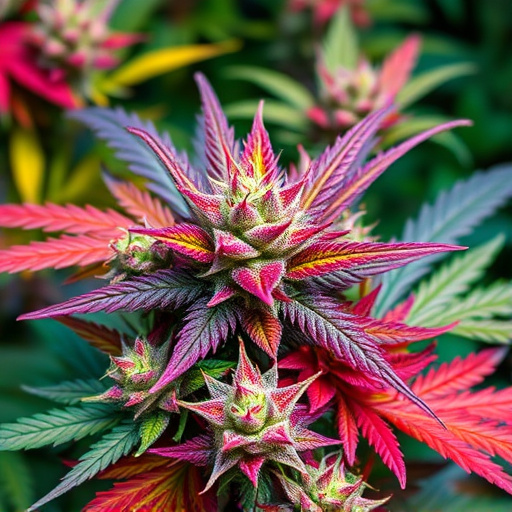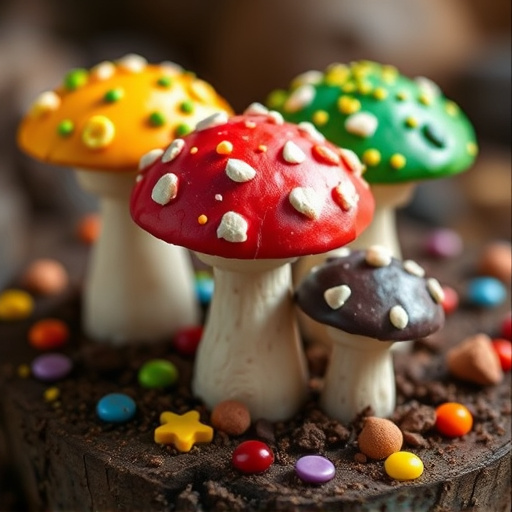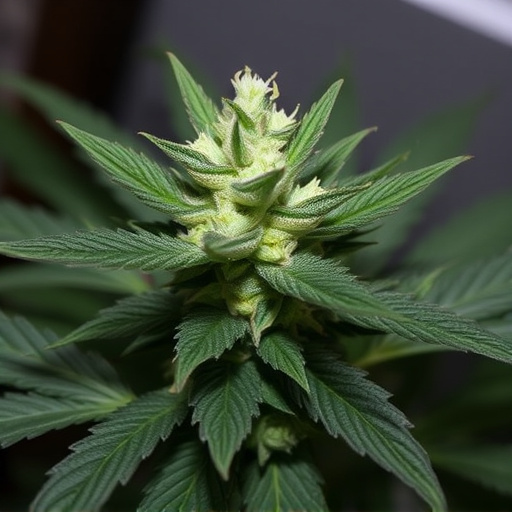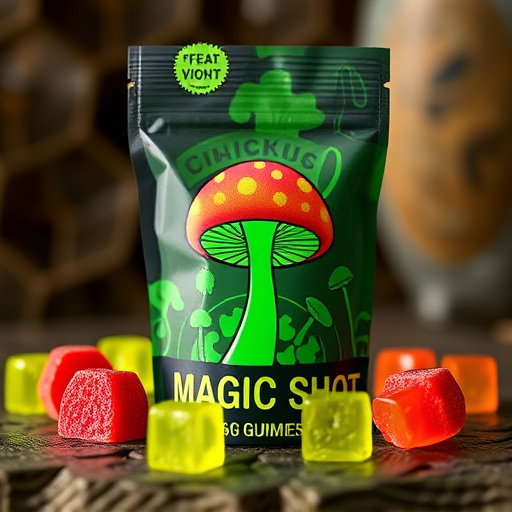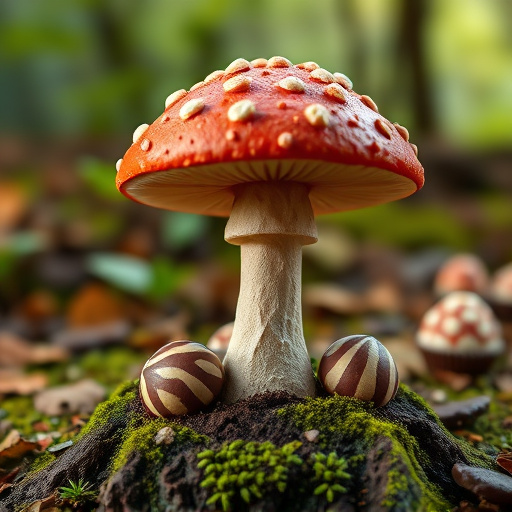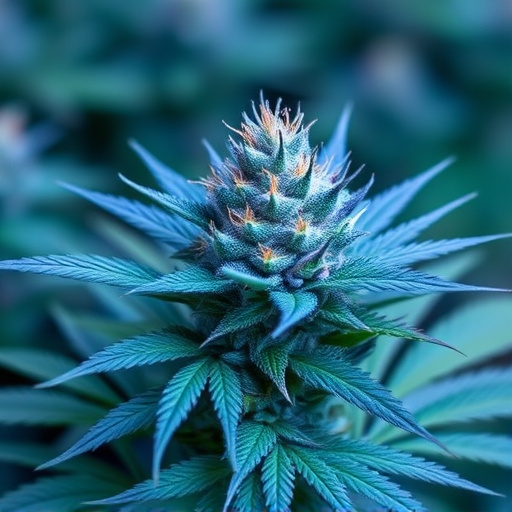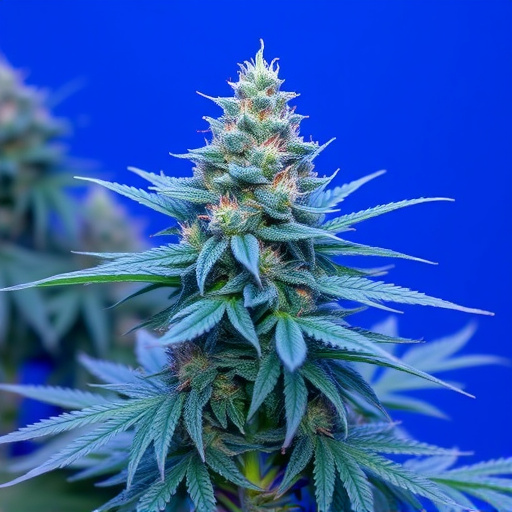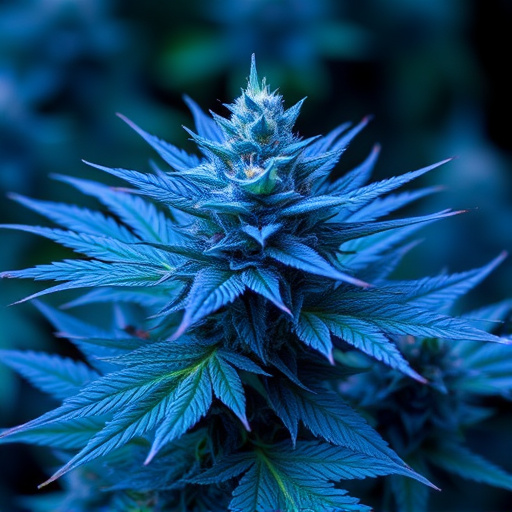Blue cannabis strains' distinctive characteristics result from specialized trichomes, tiny glandular structures that produce terpenes and cannabinoids crucial for aroma, flavor, and therapeutic effects. These strains often contain higher levels of myrcene and linalool, known for their soothing properties, making them popular among cultivators and enthusiasts. The blue color is attributed to specific cannabinoid profiles and interactions within trichomes, offering a unique sensory experience.
“Unveiling the mysteries of trichomes in cannabis flower is key to understanding this plant’s unique allure, especially in the context of distinctive blue strains. This article delves into the science behind these tiny hair-like structures, exploring their vital role in shaping cannabis’ diverse characteristics. We examine the specific traits and functions of trichomes on blue cannabis flowers, focusing on their impact on terpene production and overall strain profile. Additionally, we provide insights into optimal harvesting and curing methods to enhance the quality of blue cannabis by maximizing trichome development.”
- The Science Behind Trichomes: Unlocking Cannabis' Unique Characteristics
- – Exploring the role of trichomes in cannabis plants
- – Types and functions of trichomes on cannabis flowers
The Science Behind Trichomes: Unlocking Cannabis' Unique Characteristics
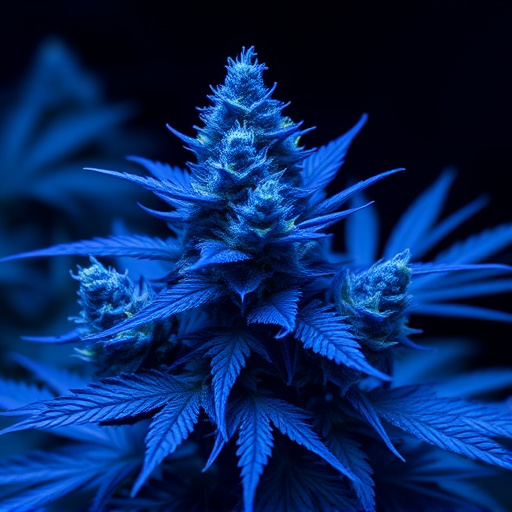
The science behind trichomes in cannabis flower is a fascinating realm that unlocks the unique characteristics of this remarkable plant, including those found in sought-after blue cannabis strains. Trichomes are tiny glandular structures that cover the surface of cannabis flowers and leaves, resembling tiny hair or crystals. They produce and secrete a wide range of chemical compounds, including terpenes and cannabinoids, which contribute to the plant’s aroma, flavor, and therapeutic effects.
In blue cannabis strains, trichomes play a pivotal role in their distinct profile. These strains often boast higher levels of myrcene and linalool, terpenes known for their soothing and relaxing properties, which are partially responsible for the calming effects associated with these varieties. The unique color is also attributed to specific cannabinoid profiles and the interaction between various compounds within the trichomes, creating a symphony of sensations that make blue cannabis strains so appealing to both cultivators and enthusiasts.
– Exploring the role of trichomes in cannabis plants
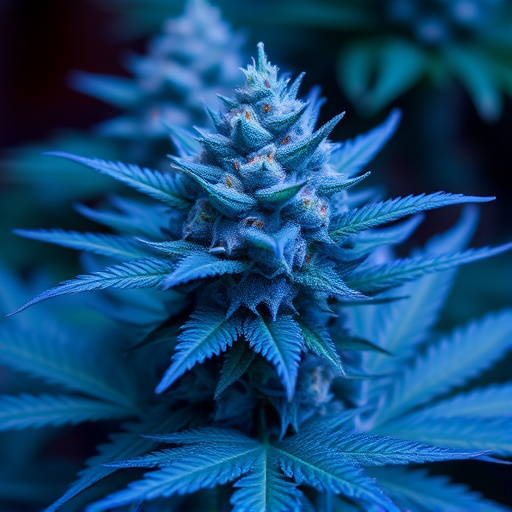
Trichomes are tiny, hair-like structures that play a pivotal role in cannabis plants, particularly in flowers destined for consumption. They aren’t just superficial features; trichomes house essential cannabinoids and terpenes, the compounds responsible for cannabis’s distinctive aroma, flavor, and effects. In blue cannabis strains, these trichomes often appear shimmering or translucent, adding to their visual appeal.
Beyond aesthetics, trichomes are key to understanding the plant’s potency and therapeutic potential. As they mature, trichomes produce a sticky resin that encapsulates these valuable compounds. The density and size of trichomes can greatly vary among different cannabis strains, including blue varieties known for their high cannabinoid content. This diversity means consumers can choose strains based on desired effects, whether seeking relaxation or invigorating sensations.
– Types and functions of trichomes on cannabis flowers
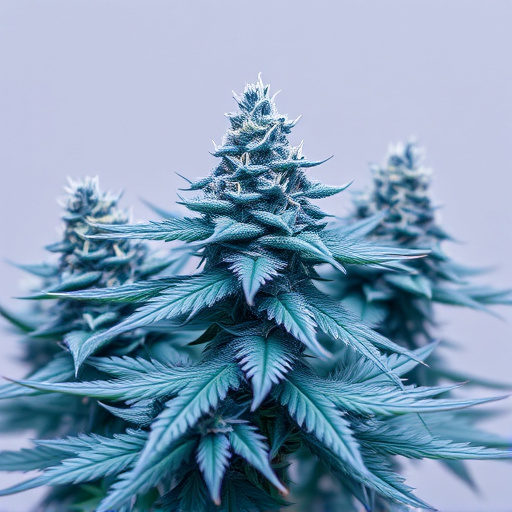
Trichomes are tiny, hair-like structures that cover the surface of cannabis flowers and play a vital role in the plant’s unique properties. These specialized glands produce various compounds, including terpenes, cannabinoids, and flavonoids, which contribute to the distinct aroma, flavor, and effects associated with different blue cannabis strains. The primary functions of trichomes are to protect the plant, attract pollinators, and defend against potential threats.
There are several types of trichomes on cannabis flowers: glandular trichomes, nonglandular trichomes, and hair-like structures known as bulbos. Glandular trichomes are the most significant, producing a wide range of chemical compounds that give blue strains their characteristic scents and medicinal benefits. These trichomes often appear sticky or resinous, reflecting their high cannabinoid content, particularly THC (tetrahydrocannabinol). Understanding trichome structure and function is essential for cannabis enthusiasts and researchers alike, as it helps explain the diverse effects and therapeutic attributes of different blue cannabis varieties.
Trichomes, those tiny hair-like structures adorning cannabis flowers, are key players in unlocking the unique characteristics of this remarkable plant. From providing protection to attracting pollinators, these specialized cells contribute significantly to the diverse profiles found in different blue cannabis strains. By understanding trichome science, cultivators can better appreciate and optimize the complex interplay that gives each strain its distinct aroma, flavor, and effects, enhancing the overall experience for cannabis enthusiasts.

